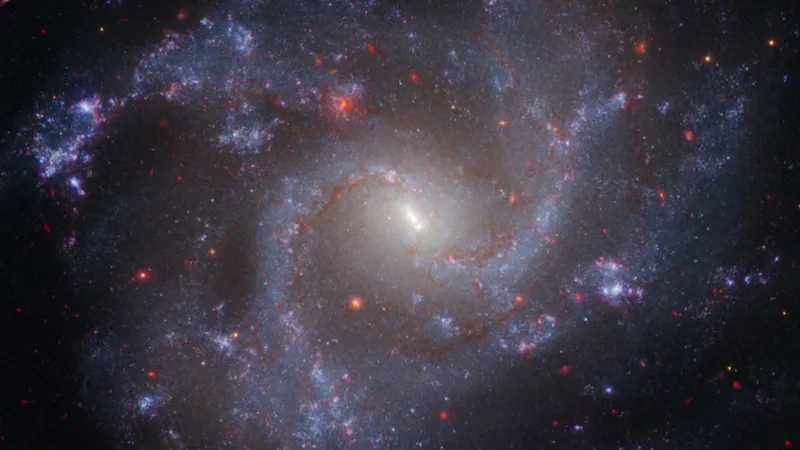
James Webb Telescope Data Unveils Surprising Insights into the Universe's Expansion
2024-12-09
Author: Emma
In a groundbreaking development stirring debate among physicists, recent data from the James Webb Space Telescope (JWST) suggests that our understanding of the Universe's accelerating expansion may need a major overhaul. This acceleration, initially recognized with the award of the 2011 Nobel Prize in Physics, has led scientists to reconsider the fundamental principles of cosmology.
Historically, the Hubble Constant has been a key measure of this expansion, denoted in kilometers per second per megaparsec (Mpc). It measures how fast galaxies are moving away from us relative to their distance. However, contradictions in various methods of measuring this constant have raised critical questions. For example, measuring distant supernovae gave a value of 73 km/s Mpc, while observations from the Cosmic Microwave Background (CMB) via the Planck satellite produced a lower estimate of 67 km/s Mpc.
Adding to this intrigue, a novel measurement technique involving gravitationally lensed supernovae provided yet another value, slightly lower than the CMB measurements. The gravitational lensing effect occurs when a massive galaxy distorts space-time and magnifies light coming from distant objects, creating multiple images of the same supernova. This independent method, while introducing uncertainties, presented a new avenue for determining the Hubble Constant.
The JWST's recent observations have solidified the accuracy of Hubble's measurements concerning nearby cosmic distances. This was achieved through the study of 1,000 Cepheid variable stars across five galaxies, extending as far as 130 million light-years away. These stars' brightness had previously been obscured by interstellar dust, complicating Hubble's observations. With JWST's enhanced capabilities, astronomers were able to isolate and accurately measure these stars, reaffirming Hubble's findings and methodically eliminating measurement errors.
This latest research goes a step further, serving as a critical cross-check on previous studies by utilizing three different methodologies to leverage distance measurements to supernova-hosting galaxies. Lead author Adam Riess from the Space Science Telescope Institute emphasized that this confirmatory analysis highlights a significant contradiction in the Universe: the current expansion rate observed by Hubble starkly contrasts with predictions made by the LambdaCDM model, which is grounded in the legacy of the CMB.
The resulting calculation from this extensive study indicates a Hubble constant of 72.6 km/s/Mpc, aligning closely with Hubble's figure of 72.8 km/s/Mpc. This precision raises the stakes for theorists, compelling them to derive explanations for the discrepancies that have emerged.
One promising line of inquiry posited by cosmologists revolves around 'early dark energy'—an unknown component of matter that could have influenced the Universe's expansion right after the Big Bang. Other speculative theories include atypical dark matter properties, exotic particles, dynamically changing electron mass, or even primordial magnetic fields. With these revelations, the cosmos may hold secrets that challenge our current understanding and broaden the horizons of theoretical physics.
As researchers delve deeper into these unexpected findings, the quest to clarify the Universe's behavior continues, piquing the interest of scientists and space enthusiasts alike. What could these new insights mean for our grasp of cosmic laws, and will they usher in a new era of astrophysical theories? Stay tuned as we unravel the mysteries of the cosmos!









 Brasil (PT)
Brasil (PT)
 Canada (EN)
Canada (EN)
 Chile (ES)
Chile (ES)
 España (ES)
España (ES)
 France (FR)
France (FR)
 Hong Kong (EN)
Hong Kong (EN)
 Italia (IT)
Italia (IT)
 日本 (JA)
日本 (JA)
 Magyarország (HU)
Magyarország (HU)
 Norge (NO)
Norge (NO)
 Polska (PL)
Polska (PL)
 Schweiz (DE)
Schweiz (DE)
 Singapore (EN)
Singapore (EN)
 Sverige (SV)
Sverige (SV)
 Suomi (FI)
Suomi (FI)
 Türkiye (TR)
Türkiye (TR)